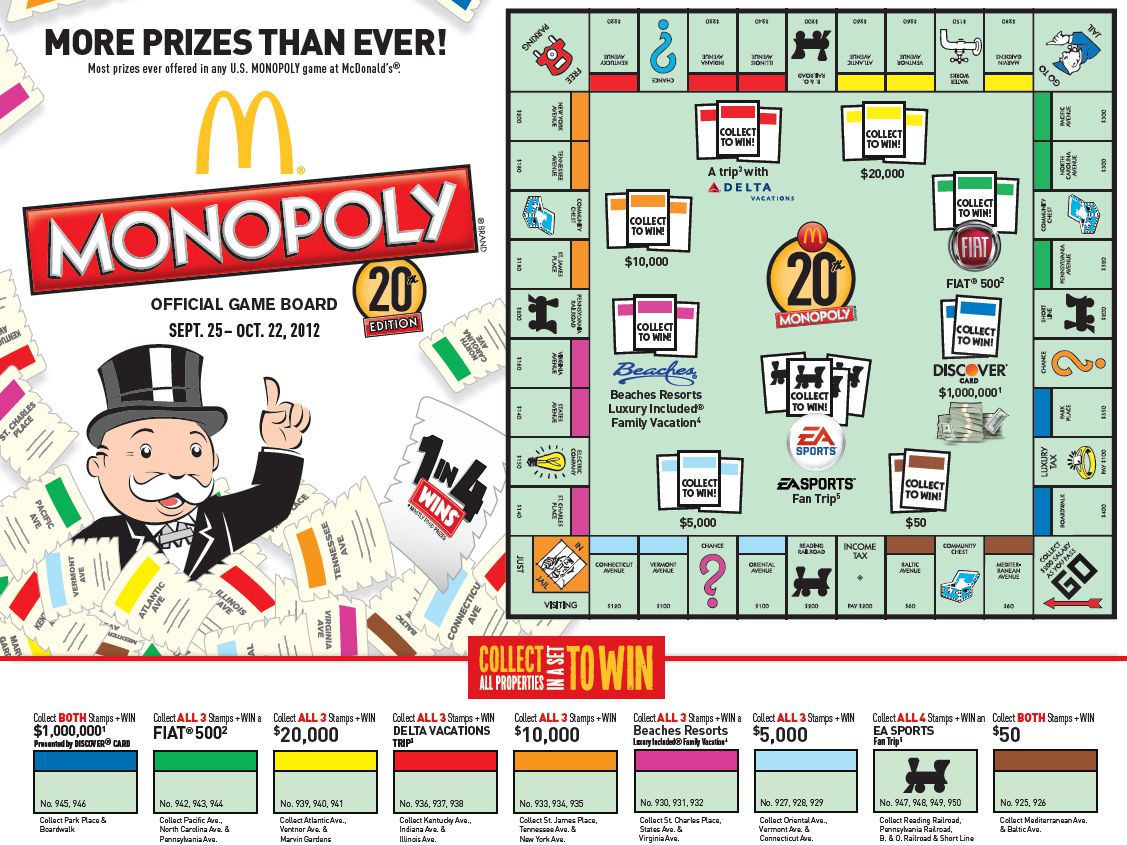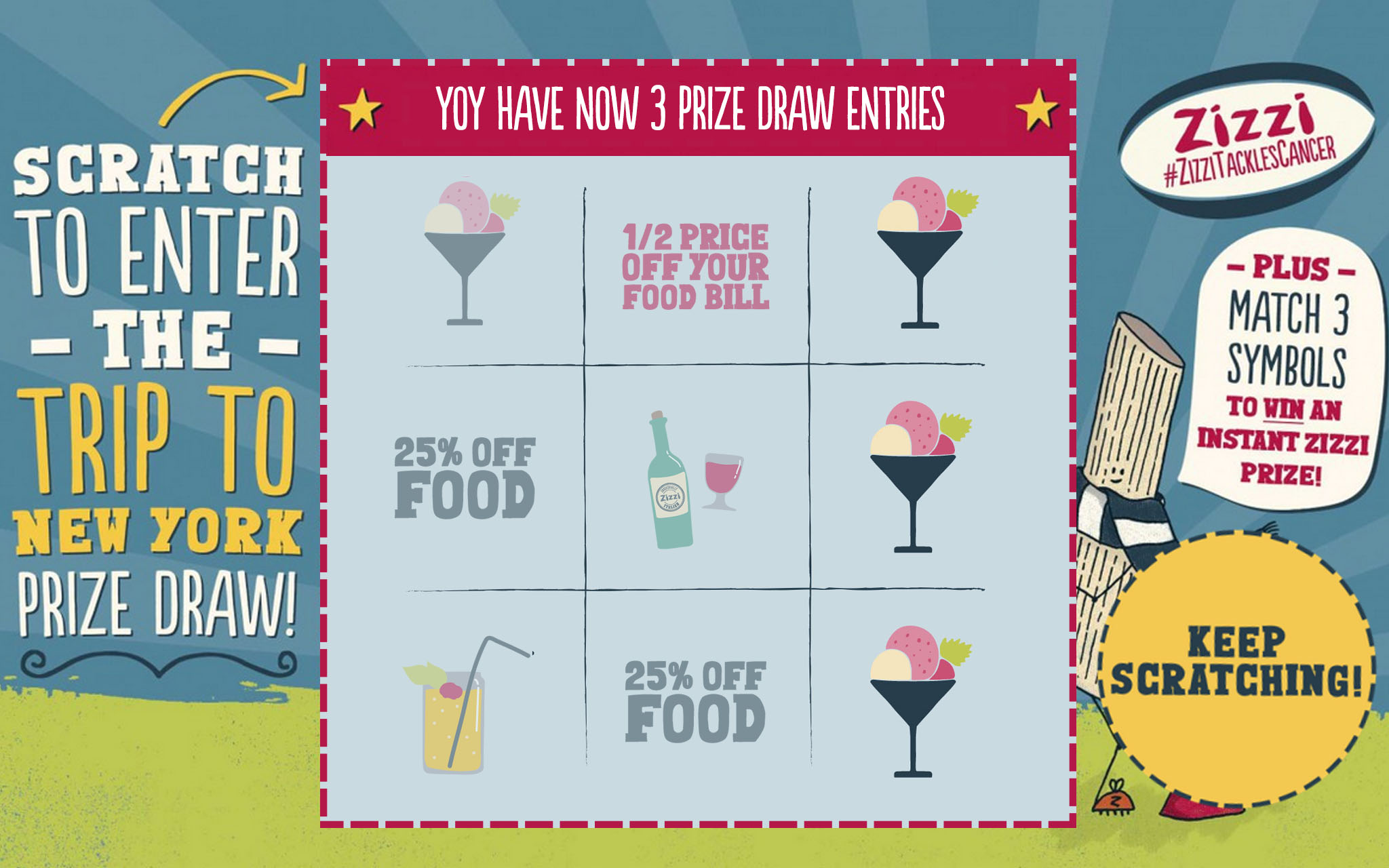Marketing is constantly changing, searching for new ways in which they can target consumers through innovative and engaging distributing channels. Gamification is something that is on an upward spiral within the marketing sector, becoming a brand favourite for many. Although it has been around for years, maybe even decades, digital marketers are only recently starting to realise that gamification can take their product campaigns to a whole new level, seeing engagement soar through the roof (Smart insights, 2015). The adoption is being undertaken by many brands, both big and small, M&S and Zizzi are just some among them.
But what is gamification? – Gamification incorporates fun and elements of competition into a marketing campaign (Matthews, 2016), which allows the consumer to be actively involved in the brand. You’ve probably been gamified on many occasions without even realising (Cramer, 2014) – for example, gamification in its simplest form is like when you buy a sandwich at subway, you get a stamp towards receiving a free meal. YES, loyalty schemes are a part of gamification. Krispy Kreme is a great example, join their Krispy Kreme for friends here, and instantly gain access to the following:
- Free donut for joining
- Exclusive competition, news and offers
- Sweet birthday treats every year
- Earn rewards when you visit a Krispy Kreme store

How does it work? – Companies are using a sense of competition to engage consumers and increase interest in their product by working with brand activists and potential customers through things such as contests, free product giveaways through bloggers and games that show significant relevance to their brand. It works by using gaming elements in non-gaming systems to improve user experience and engagement (Deterding, Sicart, Nacke, O’Hara & Dixon, 2011).
Now that we know what it is and how it works, let’s look at some of the best gamification examples out there:
- McDonalds Monopoly game – You probably all know it and you probably all LOVE it. Its one of the most obvious gamification campaigns out there and has worked wonders for McDonalds, hence why they keep bringing it back, the truth is we just can’t get enough of it. The little glimpse of hope we get when peeling back the sticker to see if it’s a station we haven’t got yet. For McDonalds, this dates right back to 1987 (can you believe it!?) in 2010, their sales grew by 5.6% purely off the back of this campaign (Yukaichou, 2013).

- Zizzi – creating a scratch card game on smartphones based around the world cup. Restaurant chain Zizzi have previously used gamification in the form of an online application which allows you to win prizes, including trips to New York and even a training session with English rugby superstar Jonny May. This was done by each player earning a single entry into the prize draw. RESULTS? Yes there are some – Jo Fawcett, Zizzi’s marketing director explained they saw their email newsletter which is sent to 1.5 million subscribers click through rates increase by a third (Hobbs, 2015)

- Coca Cola shake it app – Coca Cola have known to be in the forefront of innovative and engaging marketing campaigns for quite some time now and in my opinion they have some of the best marketing campaigns out there. As a company they always know how to keep it light and fun, whilst up-keeping the real message around the brand. The shake it app was available for free download for teens in Hong Kong. During evening prime time television, a Coca-Cola ad would play, in which time you would open the app and shake your phone in front of the TV – this allowed people to win discounts and prizes through selected partners such as McDonalds. For me this is my favourite, because it really gets people talking – giving you those intense 30 seconds to get your phone out and open that app.

Gamification is great for companies when thinking about new marketing strategies and campaigns as it sits in perfect configuration with 3 of the core marketing concepts; engagement, brand loyalty and brand awareness (Lucassen & Jansen, 2014). Due to this, researchers are finding that gamification will provide a huge potential impact on the market, seeing adoption rates accelerate. So… finding it difficult to get people to talk about your brand? GAMIFICATION could be the strategy for you, cause after all everybody loves a freebee and a little competition ;).
Let me leave you with this; a lovely McDonalds Monopoly ad.
Check back in soon,
Emily xo
References:
- Yukaichou, (2013). Top 10 gamification cases you won’t forget. [online] Yukaichou. Available at: http://yukaichou.com/gamification-examples/top-10-marketing-gamification-cases-remember/#.VzImkoQrLIV [Accessed 7 May 2016].
- Hobbs, T. (2015). How brands are using gamification to boost engagement. [online] Marketing Week. Available at: https://www.marketingweek.com/2015/10/23/how-brands-are-using-gamification-to-boost-engagement/ [Accessed 8 May 2016].
- Smart Insights, (2015). Gamification as a content marketing tactic – Smart Insights. [online] Smart Insights. Available at: http://www.smartinsights.com/content-management/content-marketing-creative-and-formats/gamification-as-a-content-marketing-tactic/ [Accessed 8 May 2016].
- Cramer, T. (2014). Applying the Secrets of Gamification to Your Digital Marketing Strategy. [online] EContent Magazine. Available at: http://www.econtentmag.com/Articles/News/News-Feature/Applying-the-Secrets-of-Gamification-to-Your-Digital-Marketing-Strategy-97170.htm [Accessed 8 May 2016].
- Matthews, K. (2016). Why Gamification Works: How Brands are Marketing With Fun. [online] Convince and Convert: Social Media Strategy and Content Marketing Strategy. Available at: http://www.convinceandconvert.com/social-media-case-studies/why-gamification-works-how-brands-are-marketing-with-fun/ [Accessed 8 May 2016].
- Lucassen, G. and Jansen, S., 2014. Gamification in Consumer Marketing-Future or Fallacy?.Procedia-Social and Behavioral Sciences, 148, pp.194-202.
- Deterding, S., Sicart, M., Nacke, L., O’Hara, K. and Dixon, D., 2011, May. Gamification. using game-design elements in non-gaming contexts. InCHI’11 Extended Abstracts on Human Factors in Computing Systems(pp. 2425-2428). ACM.

This is really interesting, You are an overly skilled blogger.